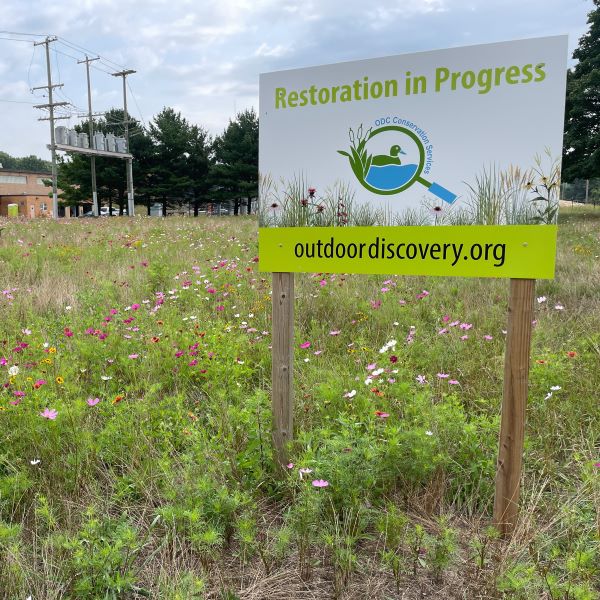Protecting Our
Water Resources
The greatest increase that our water utility sees in demand is the result of lawn irrigation in the summer months. Grass lawns often have shallow roots and need greater amounts of water to keep them from going brown and dormant in the hot summer. One of the best ways to save water and money on your utility bill is to reduce your summer lawn sprinkling.
Water conservation helps customers save money in a couple of ways. In addition to lowering monthly bills by using less, efficiently using water today helps prevent increased costs in the future by postponing infrastructure expansions that would need to be funded through rates. The Water Treatment Plant is sized appropriately to serve its customers. However, during hot dry spells in the summer, increased lawn sprinkling is a challenge for the plant’s capacity. Water conservation efforts during the hottest days of the year will extend the value of the WTP, helping to keep Holland BPW’s rates stable, which are currently among the lowest in Michigan.

The best way to conserve water when you have a lawn is to reduce the size of the area that needs to be watered. Less lawn means less water usage. For some, reducing the size of their lawn could mean utilizing mulch, rock, or other plants that have deeper root systems instead of grass. Lawns require large amounts of not only water but often pesticides to keep them pristine. By replacing grasses with native plants, water use decreases and water quality increases. Native plants have naturally deeper roots that filter water while slowing stormwater runoff, reducing soil erosion by holding soil in place, and absorbing excess nutrients in the soil that could overwise end up in the waterways.
Pesticides and stormwater runoff in and around the City of Holland drain into Lake Macatawa. The cleanliness and quality of water draining into our watershed directly impacts the quality of not only inland bodies of water or streams but also Lake Michigan, Holland BPW’s source of drinking water.

Reducing Irrigated Surfaces
Holland BPW has worked to reap the benefits of converting traditional lawns to native landscapes at each of our four facilities: the Service Center, Holland Energy Park, Water Treatment Plant and Water Reclamation Facility.
Holland Energy Park, built in 2017, has about 11 acres of sustainable landscaping. Outdoor Discovery Center (ODC) Network maintains this acreage, pulling invasive species where necessary and overplanting to keep the landscaping maintained. ODC Network has installed several rain gardens and native landscape beds around the property along with deep-rooted native plants. Native plants can include swamp milkweed, blazing star, purple coneflower, butterfly milkweed, and more. Similarly, Holland BPW’s Water Reclamation Facility has a 1/8 acre low profile prairie along with a small green roof on top of one of its buildings.
Last spring, ODC Network also planted another 5 acres of dry native prairie mix seeds at the Water Treatment Plant similar to those at Holland Energy Park. ODC Network planted deep-rooted species that were purposely chosen to withstand dry conditions without the need for watering while beautifying the landscape with a variety of blooms to last the entire growing season.
Holland BPW’s latest initiative is at the Service Center on Hastings Ave, where work began in the fall of 2023 for a 1.5-acre lawn-to-native prairie conversion. Next year, there are plans to undertake another 2.5-acre meadow near the retention pond as well.
Reaping the Benefits of Sustainable Landscapes
Reducing irrigated surfaces at Holland BPW facilities also has the advantage of reduced costs, not only for water and fertilizer but also for lawn mowing. ODC Network estimates that the average cost to mow an acre of lawn sits at approximately $2,500 for the entire growing season. This means that Holland BPW’s current sustainable landscape saves approximately $40,000 per year, with an additional $10,000 in savings yet to come as the Service Center acres are converted.
When sustainable landscaping becomes fully established and mature after a couple of growing seasons, it requires very little maintenance, saving additional time, emissions from mowing, as well as maintenance costs of lawn mowers. Reduced emissions from mowing add to potential carbon sequestration from plants, which filter out pollutants from our air and water.

Green spaces provide opportunities for natural habitats to flourish. For local flora and fauna, these landscapes create a habitat for pollinators and wildlife that are native to our community. These restored habitats also allow Holland BPW to educate visitors on not only water conservation but also environmental stewardship.
Curious about natural landscapes and how they can help you save money and protect precious water resources? Reach out to Holland BPW at 616.355.1500.
Next Article: Educational Signage at Holland Energy Park and Water Reclamation 〉
